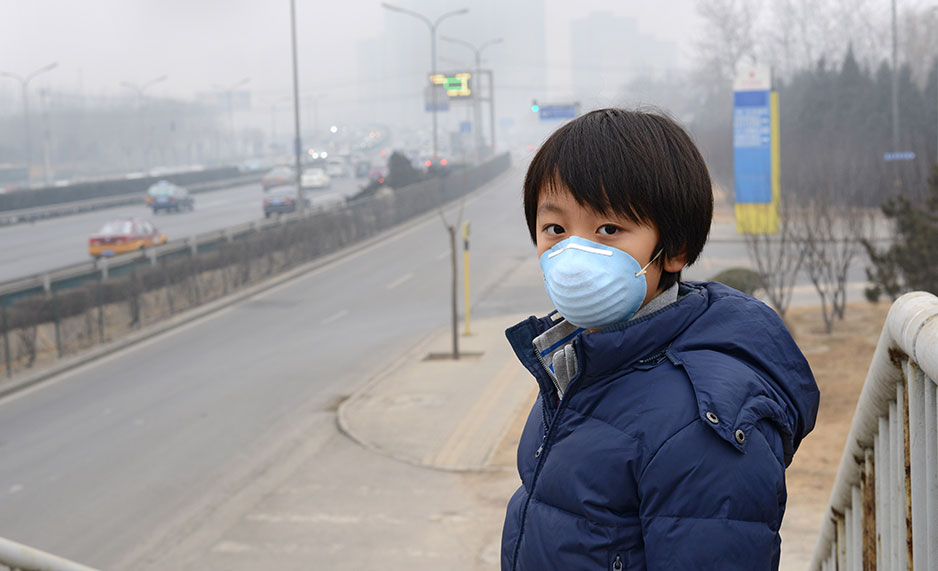Fewer than 8% of people living in Asia breathe ‘clean air’ as classified by the World Health Organisation. A new report co-authored by SEI for UN Environment proposes 25 actions that can significantly improve air quality on the world’s most populated continent.

Photo: Hung_Chung_Chih / Getty Images.
Today, over 400 people are gathering at the World Health Organisation for the first global conference on air pollution and health. The impacts of air pollution on health are well known – about 7 million people die prematurely each year from breathing polluted air containing small particles, known as PM2.5 (the term for particles with a diameter of less than 2.5 micrometers).
But we also know that premature deaths are the tip of the iceberg; many more people suffer from ill health associated with air pollution. A study published last week shows that PM2.5 air pollution triggers about 5-10 million asthma-related emergency room visits annually (about 4-9% of the total asthma related visits globally), with the biggest impacts in South and East Asia. And last year a scientific paper identified that the outdoor exposure to PM2.5 also gave rise to about 2.7 million pre-term births globally – or 18% of all pre-term births in 2010.
We increasingly know what the problem is. We know the causes.
What we now need are solutions: practical actions that can be implemented relatively easily in regions and countries with poor air quality. A new report by UN Environment prepared by over 100 Asian and international scientists, proposes 25 solutions that can significantly improve air quality on the world’s most populated continent – Asia.
Air pollution is a major political issue in many Asian countries and cities. Research shows that governments and authorities are already taking action, with new laws and stronger enforcement in recent years. This has decoupled emissions of key pollutants, such as sulphur dioxide (SO2) and nitrogen oxides (NOX), from economic growth in Asia (measured as increases in GDP). This is a significant step forward. But is it enough?
According to the report by UN Environment, should the same pace of implementation and enforcement be maintained until 2030, Asia will have the same air quality it has today despite massive economic growth. But standing still is not good enough. At the moment fewer than 8% of people living in Asia breathe ‘clean air’ as it is classified by the World Health Organisation. Without additional action, that means that an estimated 4 billion people in Asia will still be breathing health-damaging levels of air pollution in 2030.
What is to be done? What are the next steps? The UN Environment report proposes 25 measures that would significantly reduce air pollution. These air quality solutions fall into 3 groups:
Full implementation of all of these 25 measures would provide clean air for 1 billion people, up from about 0.35 billion people in 2015. Specifically, there would be a very large health benefit from improving indoor air quality. Moving from burning solid fuels, such as wood or coal, to modern fuels, such as liquid petroleum gas or electricity, could reduce premature deaths by more than about 2 million people in 2030.
25 solutions to the air pollution crisis in Asia. Video: Climate & Clean Air Coalition / YouTube.
The final group of solutions doesn’t only tackle air pollution. They also bring about a large reduction in the emissions that cause climate change. Implementing these solutions to 2030 would slow down, but not halt, global warming. The effect of implementing these by 2030 in comparison to the baseline emissions (i.e projections of emissions without any implementation of measures) would be equivalent to a reduction of 0.3°C estimated for 2050.
Adopting, implementing and enforcing these science-based solutions won’t be cheap. It will cost about $300-600 billion per year. However, the additional cost of implementing the 25 measures is not much higher than that already spent in Asia to reduce air pollution. In 2030, the cost of implementing all 25 measures would be equivalent of about 1.5% of Asia’s GDP, compared with the cost of implementing currently agreed legislation of about 1.2% of GDP.
The Asian air pollution crisis can be solved. All of the 25 science-based solutions identified in this UN report have been implemented in different parts of Asia with differing degrees of success. Ensuring that they are adopted, implemented and enforced widely and appropriately is the challenge for Asian policy makers. The evidence for action is unavoidable. Now policy-makers have a handbook for delivering clean air by 2030.
Design and development by Soapbox.